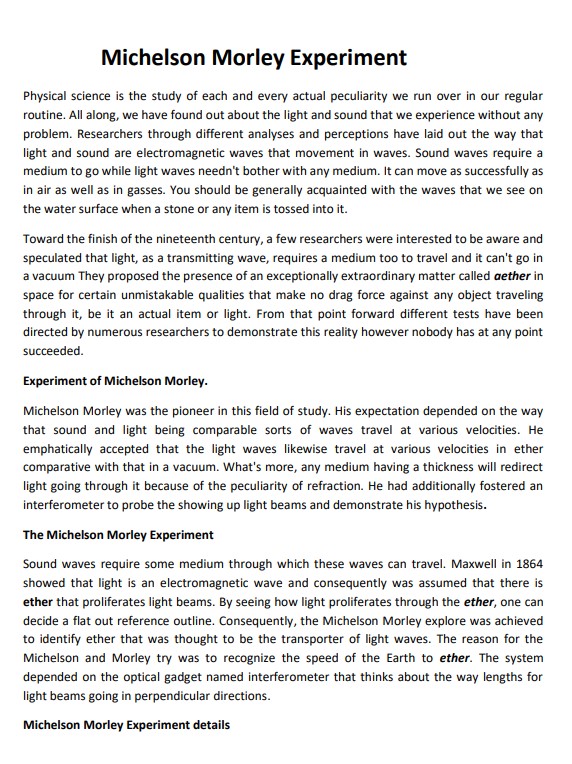Michelson-Morley Experiment
Summary:
The Michelson-Morley experiment, conducted at the end of the 19th century, aimed to detect the presence of aether, a hypothetical medium through which light waves were thought to propagate. This experiment was based on the understanding that light and sound are both types of waves, but while sound waves require a medium to travel, light waves can propagate through a vacuum.
Albert A. Michelson and Edward W. Morley designed an interferometer to observe and compare the path lengths of light beams travelling in perpendicular directions. They anticipated that the speed of light would vary depending on its movement through the ether.
The experiment involved splitting a light beam using a half-silvered glass plate, sending one beam to a mirror and reflecting the other beam. The two beams then recombined, producing interference patterns. By analyzing these patterns, Michelson and Morley aimed to detect any variations in the speed of light due to its passage through the ether.
Despite multiple attempts, the Michelson-Morley experiment yielded negative results. The conclusion was that there was no discernible difference in the speed of light when travelling through the ether. This outcome challenged the prevailing belief in the existence of aether as the medium for light propagation.
The Michelson-Morley experiment played a crucial role in shaping our understanding of light and led to the development of Albert Einstein’s theory of special relativity. Einstein’s theory proposed that the speed of light is constant in all inertial reference frames, regardless of the motion of the source or observer.
Excerpt:
Michelson-Morley Experiment
Physical science is the study of each and every actual peculiarity we run over in our regular routine. All along, we have found out about the light and sound that we experience without any problem. Researchers, through different analyses and perceptions, have laid out how light and sound are electromagnetic waves that move in waves. Sound waves require a medium to go, while light waves needn’t bother with any medium. It can move as successfully in air as well as in gasses. You should be generally acquainted with the waves that we see on the water surface when a stone or any item is tossed into it.


Reviews